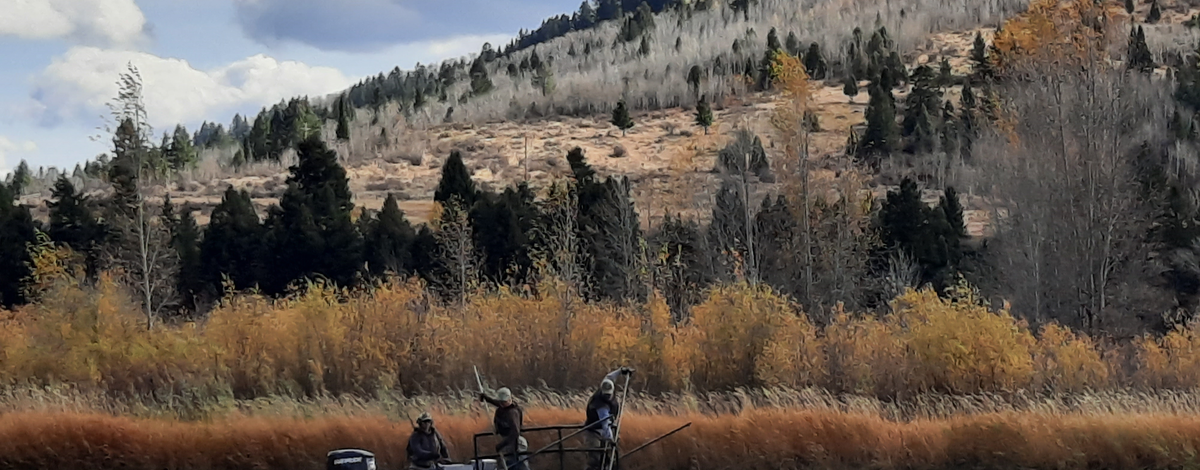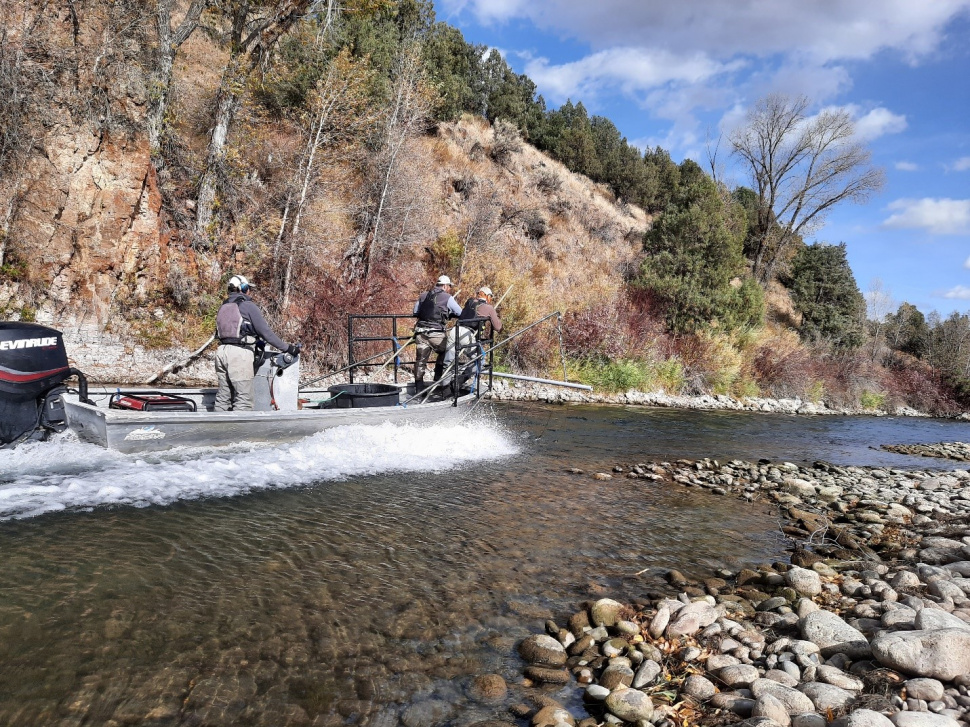The South Fork Snake River (SFSR) supports the strongest remaining fluvial population of native Yellowstone Cutthroat Trout Ocorhynchus clarkii bouvieri (YCT) within their historical range in Idaho. The SFSR is one of only a handful of large rivers in the species’ range that supports a robust population of YCT. The primary goal for the SFSR, as directed by the public and the Idaho Department of Fish and Game (IDFG) Commission, is the preservation of the genetic integrity and population viability of YCT. In the late 1990s and early 2000s, Rainbow Trout O. mykiss (RBT) abundance increased in the main stem SFSR. Rainbow Trout and RBT x Cutthroat Trout hybrids (collectively RBT hereafter) are the biggest threat to the continued persistence of YCT in the SFSR because of risks through competition and hybridization. Abundance of RBT has increased significantly in recent years to the extent that RBT were twice as abundant as YCT in 2018 increasing the potential for hybridization and competition (Figure 1).
Since 2004, the IDFG and collaborators have implemented several YCT conservation management strategies in the SFSR drainage to support the viability and genetic integrity of these populations. In 2017, a statewide survey of anglers identified that management for native YCT was a top priority. This priority is a driver for the current Fisheries Management Plan which outlines the objective of limiting RBT prevalence to less than 10% of the trout species composition of the catch at the Conant monitoring reach measured during annual fall abundance surveys. The 10% threshold would return species compositions similar to those documented during the early 1990s.
Beginning in 2018, IDFG investigated the feasibility of using boat electrofishing equipment to suppress RBT abundance in the main stem of the SFSR, by electrofishing several isolated locations multiple times and observed the changes in the number of RBT caught each outing. Rainbow trout re-populated spawning areas, suggesting that a substantial number of RBT could be removed. In 2019, IDFG further investigated available equipment and staffing to estimate the number of RBT that a moderate level of suppression could achieve and the logistics it required. This effort resulted in the removal of approximately 6,000 RBT from the SFSR, which was encouraging and we assumed with additional efforts might provide a significant benefit to the YCT population.
A thesis completed in 2014 by Evalinda DeVita identified that RBT numbers should be decreased annually by approximately 20% to effectively manage threats to YCT. Due to inherent variability in all biological systems, and the record high abundances, we believe a suppression goal of 30% would be appropriate in order to decrease RBT abundance and halt the increasing trend of RBT into subsequent years. In the spring of 2021 we achieved this goal for the first time and results were published in another newsletter which can be found at the IDFG’s Upper Snake Region blog.
In the fall of 2021, IDFG estimated 2,063 RBT/mi. (± 259) in the Conant monitoring reach. Those results, and past trends of abundance, can also be found on the Upper Snake Region blog. The Conant monitoring reach is a fraction of the upper river where RBT are most abundant, so to estimate the total number of RBT to remove through suppression, we multiplied 2,230 by the distance between Palisades Dam to Dry Canyon (19 mi.), to estimate a minimum of 39,197 RBT in the upper SFSR. Thirty percent of the total number of RBT is 11,759. Our goal is to remove 30% of the RBT from the upper SFSR in 2022, which is 13% of the total trout population from Palisades Dam downstream to Dry Canyon.
To achieve our goals in 2022, IDFG plans to suppress RBT in the SFSR using boat electrofishing four days per week (Mon – Thur), from Monday, April 18 – Thursday May 19 (Table 1). Work should begin around 8:00 a.m. and will cease around 3:00 p.m. Additionally, RBT may be removed during fall surveys or at other times opportunistically. Due to the anticipated low stream flows in the SFSR this year, we may have to use different boat ramps than we would when stream flow is higher. For example, Spring Creek boat ramp may not be available until the river increases to over 2,000 feet3/second, so we may use Conant boat ramp instead and will have to travel greater distances upstream to reach our boundaries.
Table 1. Plans for Rainbow Trout suppression in the South Fork Snake River in 2021, including the river section planned for suppression by day of the week.
| Day | River section | Launch site | Upstream boundary | Downstream boundary |
|---|---|---|---|---|
| Mon | 1 | Palisades Ramp | Palisades Dam | Palisades Creek |
| Tue | 2 | Spring Cr Ramp | Indian Creek | Ranger Station |
| Wed | 3 | Conant Ramp | Ranger Station | Pine Creek |
| Thu | 4 | Conant Ramp | Dry Creek | Lufkin Bottom |
Additionally, in response to suggestions from some anglers, we are testing a strategy to increase our effort and reduce the number of days we are on the water. For two weeks, on April 26 and April 27 and again on May 3 and May 4, we’ll be operating four electrofishing boats during two days instead of two boats on four days. We plan to cover all four sections over two days instead of four days, with two electrofishing boats in two sections each day. These days we’ll have additional fish transport capabilities with larger tankers at the boat ramps. We scheduled these days on Tuesday and Wednesday to reduce our impact to anglers, though during those days we are likely to take longer at the ramps as we work to transport more fish with more equipment.
All RBT removed from the SFSR will be translocated to other waters. Some Rainbow Trout removed from the river will be stocked into public fishing ponds, including Trail Creek, and Jim Moore ponds early during suppression efforts. However, as pond temperatures warm, the majority of the RBT removed from the SFSR are going to be stocked in the Snake River near Idaho Falls, with some also going to the upper Big Lost River.
The South Fork Snake River is an incredible fishery in the Upper Snake Region, supporting a diversity of fish species for wild trout. We are optimistic this year’s suppression efforts will provide progress towards the goals and objectives identified by the anglers of Idaho to conserve native YCT. Specifically, we hope to make significant progress toward the goals in IDFG’s fisheries management plan for the SFSR of protecting Cutthroat Trout genetic integrity and decreasing RBT abundance. The effort required in every subsequent year will depend on our success the year prior and the level of natural production of RBT occurring.



